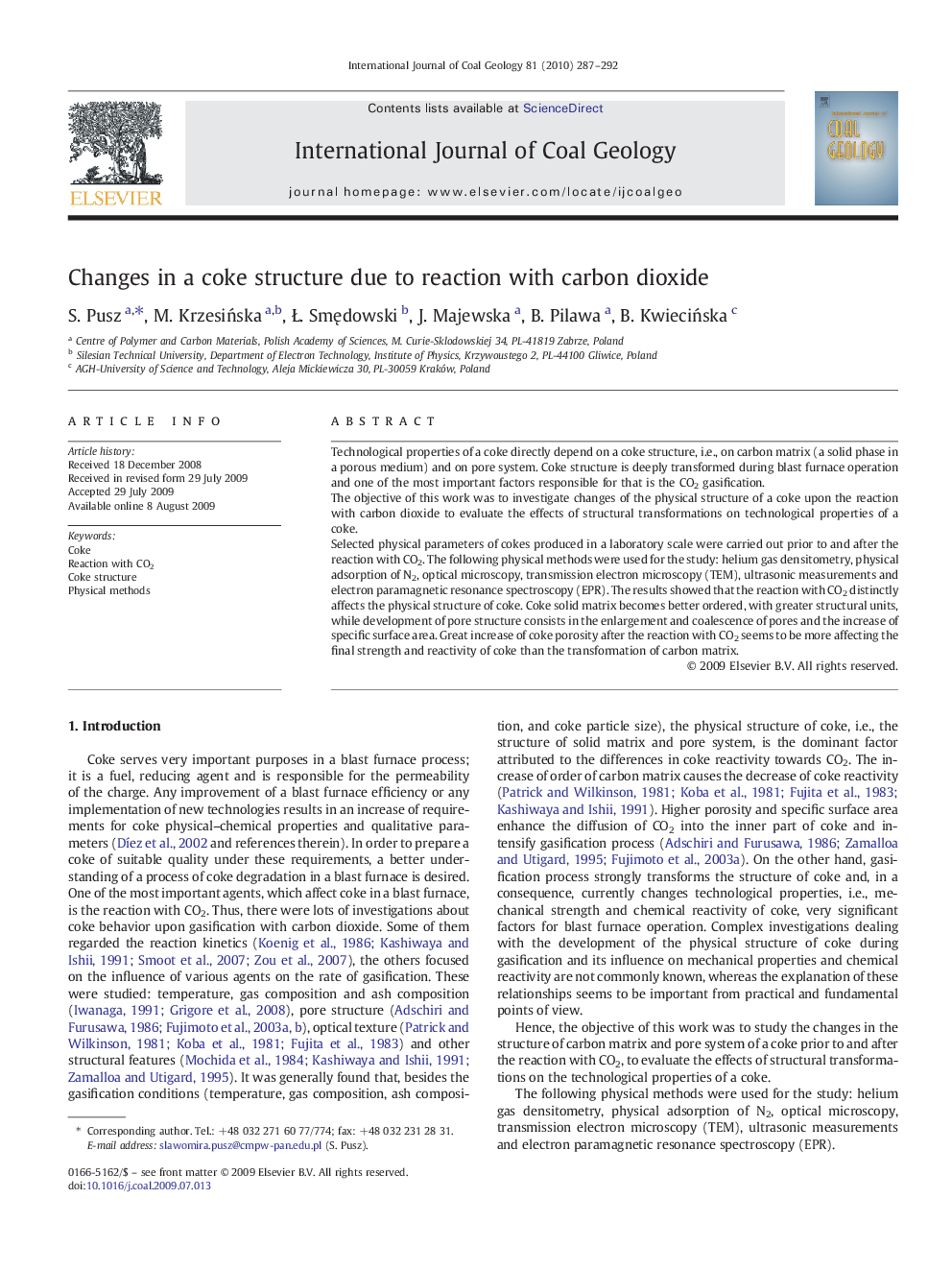| Article ID | Journal | Published Year | Pages | File Type |
|---|---|---|---|---|
| 1753804 | International Journal of Coal Geology | 2010 | 6 Pages |
Technological properties of a coke directly depend on a coke structure, i.e., on carbon matrix (a solid phase in a porous medium) and on pore system. Coke structure is deeply transformed during blast furnace operation and one of the most important factors responsible for that is the CO2 gasification.The objective of this work was to investigate changes of the physical structure of a coke upon the reaction with carbon dioxide to evaluate the effects of structural transformations on technological properties of a coke.Selected physical parameters of cokes produced in a laboratory scale were carried out prior to and after the reaction with CO2. The following physical methods were used for the study: helium gas densitometry, physical adsorption of N2, optical microscopy, transmission electron microscopy (TEM), ultrasonic measurements and electron paramagnetic resonance spectroscopy (EPR). The results showed that the reaction with CO2 distinctly affects the physical structure of coke. Coke solid matrix becomes better ordered, with greater structural units, while development of pore structure consists in the enlargement and coalescence of pores and the increase of specific surface area. Great increase of coke porosity after the reaction with CO2 seems to be more affecting the final strength and reactivity of coke than the transformation of carbon matrix.
